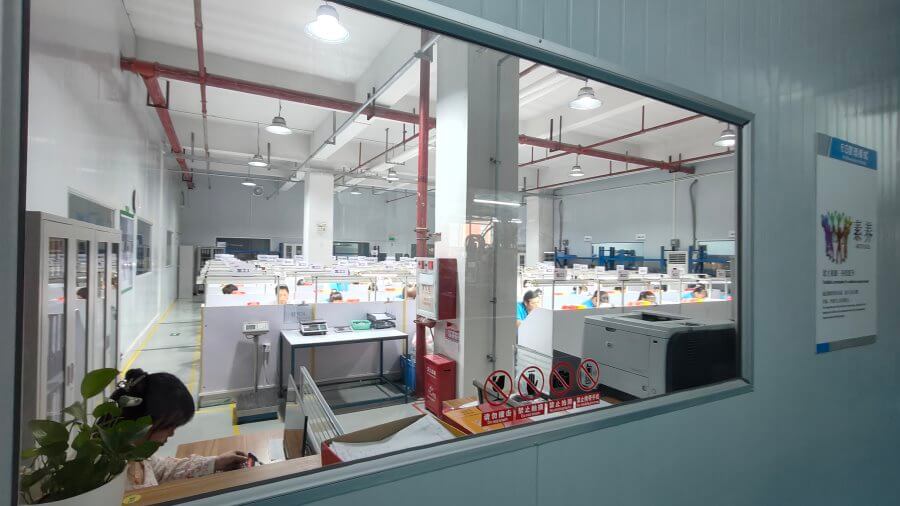With the increasing number of industries and applications requiring antistatic measures, especially with the expansion of electronic computer applications, the likelihood of static electricity generation has also increased. Additionally, awareness of static electricity prevention has grown, and many countries have increasingly standardized antistatic measures. Ultimately, the development of various antistatic devices is crucial.
Because silicone is environmentally friendly, its use is steadily increasing in both daily life and industrial production. However, silicone products are highly susceptible to damage from static electricity, making static prevention a key concern in the manufacturing process.
Principle of Static Electricity Generation
All objects are made up of molecules or atoms, which consist of a nucleus and electrons. When two objects come into contact or move close to each other, electrons may transfer between them, creating an imbalance of charges on their surfaces. If this charge is not dissipated, it accumulates, leading to static electricity. A statically charged object attracts others with an opposite charge and may discharge when brought near another surface.
We often experience static electricity in everyday life. For example, getting a small shock when touching a car door in winter. In dry, cold weather, removing a synthetic sweater can produce visible sparks, which are also a form of static discharge.
Silicone, being an insulator, does not easily release accumulated charge. When rubbed against other materials, static electricity builds up on its surface. This can be demonstrated by bringing a piece of silicone near small paper scraps, which will be attracted to it. Similarly, silicone phone cases tend to attract dust when kept in pockets for long periods, another sign of static buildup.
In manufacturing, static electricity in silicone can cause problems. For instance, if a silicone pad carries static charge, it could potentially damage delicate electronic components placed on top. To prevent such issues, antistatic silicone materials are recommended.
Differences Between Antistatic Silicone and Conductive Silicone
Resistances between 10^6 and 10^12 ohms are considered antistatic, while resistances above 10^12 ohms are considered insulating. Most silicone products on the market are insulating.
- Antistatic Silicone (Antistatic Silicone Rubber):
Has a surface resistance ranging from 10^6 to 10^12 ohms, making them antistatic. A resistance between 10^6 and 10^8 ohms is permanent, but the material’s performance may degrade over time. If the resistance exceeds 10^10 ohms, it is considered short-term antistatic. Antistatic silicone products have a surface resistance ranging from 10^6 to 10^10 ohms. - Conductive Silicone:
Has a surface resistance lower than 10^5 ohms, which is classified as conductive. The volume resistivity generally ranges from 3 to 10 ohm·cm, with a relative density of 1.15, Shore A hardness of 60, tensile strength of 5.7 MPa, and elongation at break of 265%. Conductive silicone can be made by blending methyl vinyl silicone rubber (base rubber), silica, conductive fillers, structure control agents, and organic peroxides. When the volume resistivity drops below 10 ohm·cm, conductive silicone also has electromagnetic shielding capabilities.
Methods for Removing Static from Silicone Products
1. Addressing the Issue at the Source
Start by adding antistatic agents to the raw silicone materials to effectively control static generation. During production, install static eliminators at the injection molding machine’s feed point and utilize air humidifiers in the workshop to prevent static buildup on silicone products. When static electricity is generated, static eliminators, ion wind bars, or other tools can be used to eliminate static from the silicone products. These devices generate large amounts of positive and negative ions, effectively neutralizing the static! Additionally, we can take preventive measures for static during the final product stage without damaging the silicone product.
2. Using Ion Wind and Static Eliminators
Ion wind and static eliminators are effective tools for removing static generated during the high-speed drawing of silicone sheets. They prevent the sheets from attracting dust or sticking together due to static, thereby improving the quality and classification of the plastic sheets after production. Installing a ring-shaped static eliminator at the silicone feed inlet of the injection molding machine can eliminate the high-voltage static generated during the feeding process, preventing material blockages caused by static and ensuring smooth production.
3. Using Antistatic Agents
Applying antistatic coatings to the product’s surface can eliminate static without compromising product performance and transparency. Antistatic liquids can be added during lamination to coat both inner and outer layers, similar to alcohol-based liquids.
4. Spraying Oil
Spraying oil on the surface of silicone products can eliminate static issues and also enhance the smoothness and gloss of the product’s surface. However, this method has limitations, as baby products and medical items cannot have oil sprayed on them due to health concerns.
5. Using Antistatic Silicone
Start at the source by adding antistatic agents to the raw materials, which can effectively control the generation of static electricity.
Applications of Antistatic Silicone
Antistatic silicone (also known as antistatic silicone rubber) not only possesses the general characteristics of regular organic silicone, but also provides antistatic properties, and has the added benefit of excellent heat resistance, which was difficult to achieve with past technologies. It has electrostatic prevention effects, while maintaining the basic properties of regular organic silicone.
Antistatic silicone not only serves the purpose of eliminating static, but also prevents electric shock accidents caused by low-voltage line leakage. If conditions permit, antistatic liquids or agents that are compatible with silicone can be added during the production process to enhance the product’s static protection. For finished products, antistatic liquids can be applied to the surface to maintain the static prevention effect for about six months before it starts to wear off.
Uses of Antistatic Silicone (Antistatic Silicone Rubber)
- Static Elimination and Electric Shock Prevention: Antistatic silicone (antistatic silicone rubber) helps eliminate static electricity and prevents electric shock accidents caused by low-voltage line leakage.
- Applications in Areas Prone to Static Accumulation: Antistatic silicone is useful for surfaces and wheels of vehicles that are prone to static buildup. Compared to metal or concrete paving materials, antistatic silicone better ensures workplace safety and hygiene while effectively preventing static buildup.
- Electrical Insulation in Oil Transport: Antistatic silicone has good electrical insulation properties. As oil transport is prone to fire risks, using antistatic silicone in oil delivery hoses ensures that static is prevented, thus securing the safe transportation of oils.
- Low-Cost Static Protection for Products: Antistatic silicone provides a cost-effective solution for static protection in various products.
- Medical Applications: Antistatic silicone is used in hospitals, particularly in operating rooms. It can be used to manufacture antistatic silicone shoes that prevent static generated by flooring, mobile stretchers, or tool cart wheels.
- Industrial Use in Electronic Component Workshops: Antistatic silicone is ideal for use in factory workshops that handle electronic components and electrical rooms. In explosive or flammable environments, antistatic silicone conveyor belts can help prevent accidents caused by sparks.
- Printing Applications: Antistatic silicone is used in the production of pad printing pads. These pads transfer patterns from steel plates onto various products, including toys, electroplated products, electronic toys, trademarks, communication equipment, electronic products, and craft gifts. The use of antistatic silicone helps in the printing of irregular patterns on these items.
Types of Antistatic Silicone
Industrial products are often troubled by static electricity, which can sometimes cause more than just inconvenience. In certain hazardous environments or with precision electronic instruments, static electricity can cause significant damage. As a result, various devices have been developed to address this issue, and antistatic silicone is one of the most effective solutions. So, what distinguishes antistatic silicone products from regular silicone products? The main difference lies in their resistance values. Regular silicone products are insulating, with resistance values above 10^12Ω. In contrast, antistatic silicone products have resistance values ranging from 10^6Ω to 10^10Ω, achieved by adding special antistatic agents to the silicone raw material.
Antistatic silicone has been specially developed in various types for different product environments and requirements:
1. Milky White General Purpose Antistatic Silicone
This type of antistatic silicone offers excellent antistatic performance, with a resistance value ranging from 10^6Ω to 10^10Ω. It is widely used in industries such as manufacturing, medical, electronics, electrical, and security products.
2. Colored Non-Shedding Antistatic Silicone
This type of antistatic silicone can be customized in colors such as black, gray, iron red, deep blue, and others to meet product color requirements. It has a wide range of applications and an important feature of non-shedding during friction. It also features easy demolding and excellent rebound performance.
3. Flame Retardant Antistatic Silicone
This type of antistatic silicone has special flame retardant properties and can achieve the UL-94V0 fire rating in the United States. It is non-flammable, ensuring safety and excellent fire-resistant performance.
4. Low Temperature Resistant Antistatic Silicone
Low-temperature resistant antistatic silicone is suitable for working temperatures as low as -70°C. It can withstand extreme temperatures and maintain stability under harsh conditions without affecting performance. It is widely used in the production of seals for aircraft or spacecraft doors, windows, panels, body cavity seals, gaskets, sealing switches, engine and hydraulic device seals, and cable insulation layers. It is a crucial material in the aerospace industry, advanced technology sectors, and other national economic departments, used for manufacturing various molded and extruded products in the aviation industry as cold-resistant silicone.
5. High Temperature Resistant Antistatic Silicone
This flame-retardant, high-temperature resistant antistatic silicone offers excellent heat resistance, capable of withstanding temperatures up to 300-350°C. It can be molded or extruded to produce suction cups, electronic device trays, parts, tubing, oven seals, and other high-temperature resistant silicone products.
6. High Temperature Flame Retardant Antistatic Multifunctional Silicone
This special type of silicone integrates high temperature resistance, flame retardancy, and antistatic properties. It is an exclusively developed model for multifunctional purposes.
7. Low Temperature High Rebound Antistatic Multifunctional Silicone
This special silicone combines low-temperature resistance, high rebound, and antistatic properties. It is an exclusively developed solution for multifunctional use.
8. Foamed Flame Retardant Antistatic Multifunctional Silicone
This special silicone integrates foaming, flame retardancy, and antistatic properties. It is an independently developed product.





